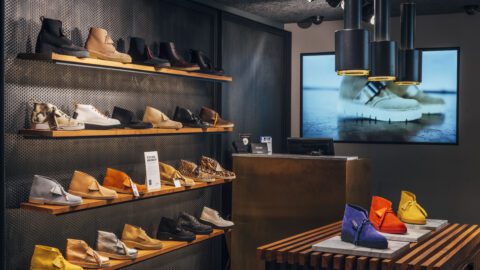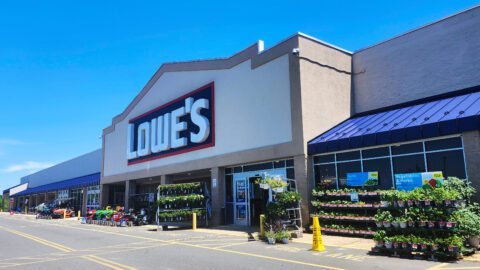Retailers understand that gaps between shoppers’ personalized experiences online and in brick-and-mortar stores are problematic, and they are employing technology to satisfy consumers across every channel, at any time and via the method of their choosing.
Boston Retail Partners (BRP) identifies cloud-based unified commerce — the use of a single platform to support commerce for stores, mobile and the web — as the linchpin to competing in a fast-changing, omnichannel environment. In an online survey of 500 top North American retailers, BRP found that 28% of respondents have already implemented unified commerce, more than three times the percentage (9%) reporting that capability last year. By the end of 2020, 81% of retailers will have deployed unified commerce.
“Retail and customer engagement models must transform,” said Brian Brunk, Principal at BRP in a statement. Because legacy retail applications and infrastructure are not equipped for today’s requirements, “retail winners in 2018 and beyond need to accelerate the transformation to cloud-based unified commerce.”
Three Top Customer Engagement Priorities For 2018
In its 2018 POS/Customer Engagement Benchmarking Survey, BRP evaluated retailers’ progress in implementing technology solutions to meet customers’ ever-rising expectations. Retailers’ three top priorities for 2018 are:
- Customer identification/personalization of the customer experience (62%);
- Alignment of the customer experience across mobile apps and the web (54%); and
- Empowering associates with mobile tools (51%).
“Customers appreciate personalized offers and recommendations when shopping online or via mobile, and now they expect the same personalization, or better, when they shop in a store,” said Perry Kramer, SVP and practice lead at BRP in a statement. “As customer expectations have been reshaped by the digital retail experience, successful retailers have shifted their focus in the physical store environment.”
Retailers are changing the technology they use to personally identify customers in their stores. They are decreasing their reliance on mobile web sites, which dipped from 40% in 2017 to 28% in 2018, and increasing the use of MAC (Media Access Control) addresses as unique identifiers (26%). Beacon (19%) and Bluetooth (16%) usage are also on the rise, with BRP anticipating even greater use of beacon technology in the coming years.
Four Customer Experience Pillars Defining CX
BRP organized the report to quantify retailers’ progress on four pillars that define the required customer experience: personal, mobile, seamless and secure.
Personal: Customers don’t get the personalized experience they enjoy online when they walk into a physical store. While the key to bridging that gap is accessing the purchasing habits and preference of the individual shopper, most customer data cannot be accessed by store personnel until checkout or later, after the associate has lost the opportunity to influence the transaction.
- One-quarter of stores can provide transaction lookup prior to checkout, but only 19% of stores can provide customer-specific messaging or customer-specific offers and discounts;
- At checkout, more than half (53%) of store associates can access contact information, but only about one-third (34%) can access customer attributes/preferences. The ability to call up other data, such as personalized product recommendations, is less common;
- Only 23% of retailers have technology to power suggestive selling based on previous purchases, but 83% plan to have the capability within three years; and
- While just 23% of retailers can provide personalized rewards based on customer loyalty in stores, 76% will have this capability within three years.
Mobile: The pervasiveness and ease-of-use of mobile devices offer tremendous opportunities for retailers as the use of mobile devices — both in the hands of associates and customers — continues to increase.
- By 2019, 62% of retailers plan to increase their use of non-tablet mobile POS, and 59% will increase their use of tablets;
- By next year, 45% of retailers will have increased their use of customer-owned mobile devices for POS transactions and 42% will have increased their use of hybrid POS;
- 42% of retailers currently offer mobile solutions for associates; within three years, 78% of retailers plan to offer these tools; and
- As a mobile service for customers, 60% of retailers offer product information; 57% provide prior-purchase availability, and 54% offer mobile coupons, specials and promotions.
Seamless: With “real-time” retail, shoppers are able to access a single cart for shopping via smartphone, on a computer or in a store. Unified commerce enables this seamless customer experience.
- 28% of retailers had implemented a single commerce platform for store, mobile and the web in the 2018 study, as compared to only 9% last year. Within three years, 81% expect to have this technology;
- Retailers are making headway with cross-channel fulfillment: 48% offer buy online, pick up in-store (BOPIS); 45% have implemented buy in-store and ship-from-DC, other store or vendor; and 42% allow consumers to buy anywhere-ship anywhere;
- Within three years, 78% will offer BOPIS; 75% will offer buy in-store and ship-from-DC, other store or vendor; and 72% will offer buy anywhere-ship anywhere; and
- Within the supply chain, 66% of retailers have inventory visibility across channels, 53% have order visibility across channels, and 53% can accept returns across channels.
Secure: As retailers seek new ways to use customer information to provide customized experiences, they must address how to protect that data. This requires that retailers provide data security beyond the realms of payments and networks.
- End-to-end encryption (E2EE) prevents third parties from accessing data throughout a system, because only the authorizing parties have access to the encryption keys. While 68% of retailers have E2EE now, 91% will have it by the end of 2020;
- Tokenization enables retailers to remove sensitive information from the network by substituting payment card data with a token that is used as an identifier. While 30% of retailers offer a single-token solution across the enterprise today, that percentage will double to 61% within three years;
- Mobile payment acceptance not only allows customers to make purchases without their wallet, but it also provides an additional level of security that isn’t available with credit cards: 35% of retailers offer mobile payment acceptance today, and 76% will offer it within three years; and
- Apple Pay and PayPal have equal acceptance (37%) by retailers today. Within 12 months, 63% of retailers will accept Apple Pay and only 51% will accept PayPal.













